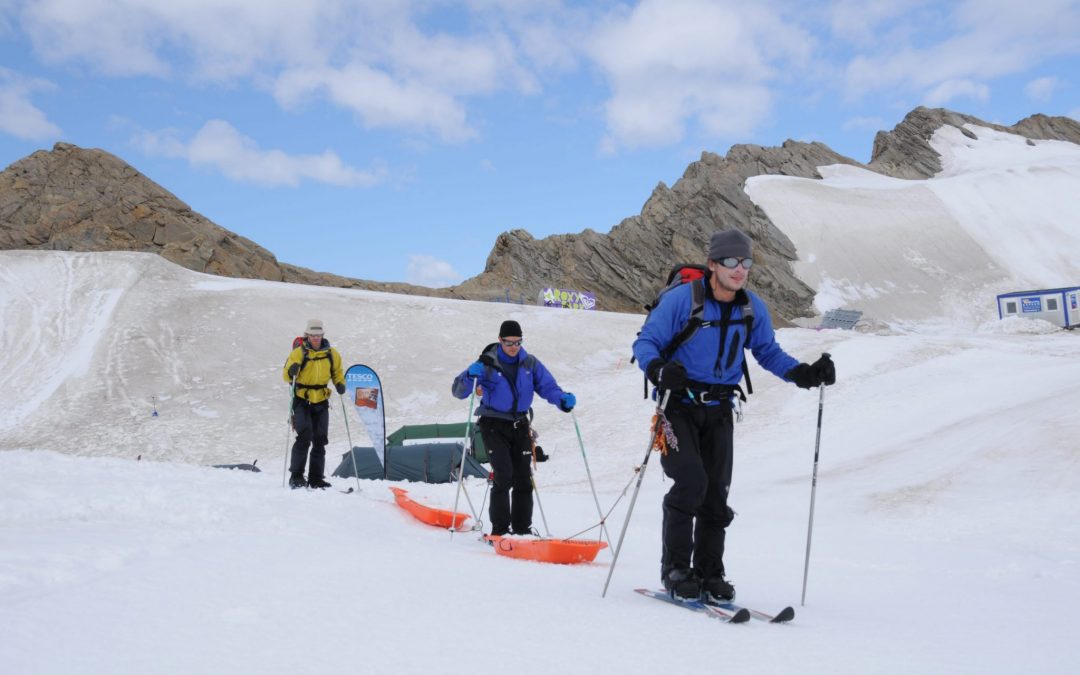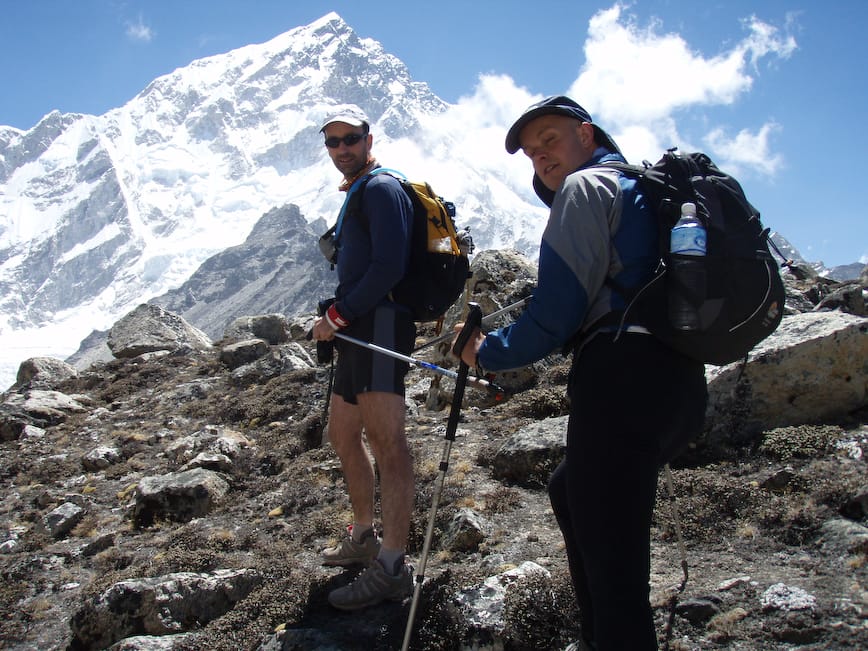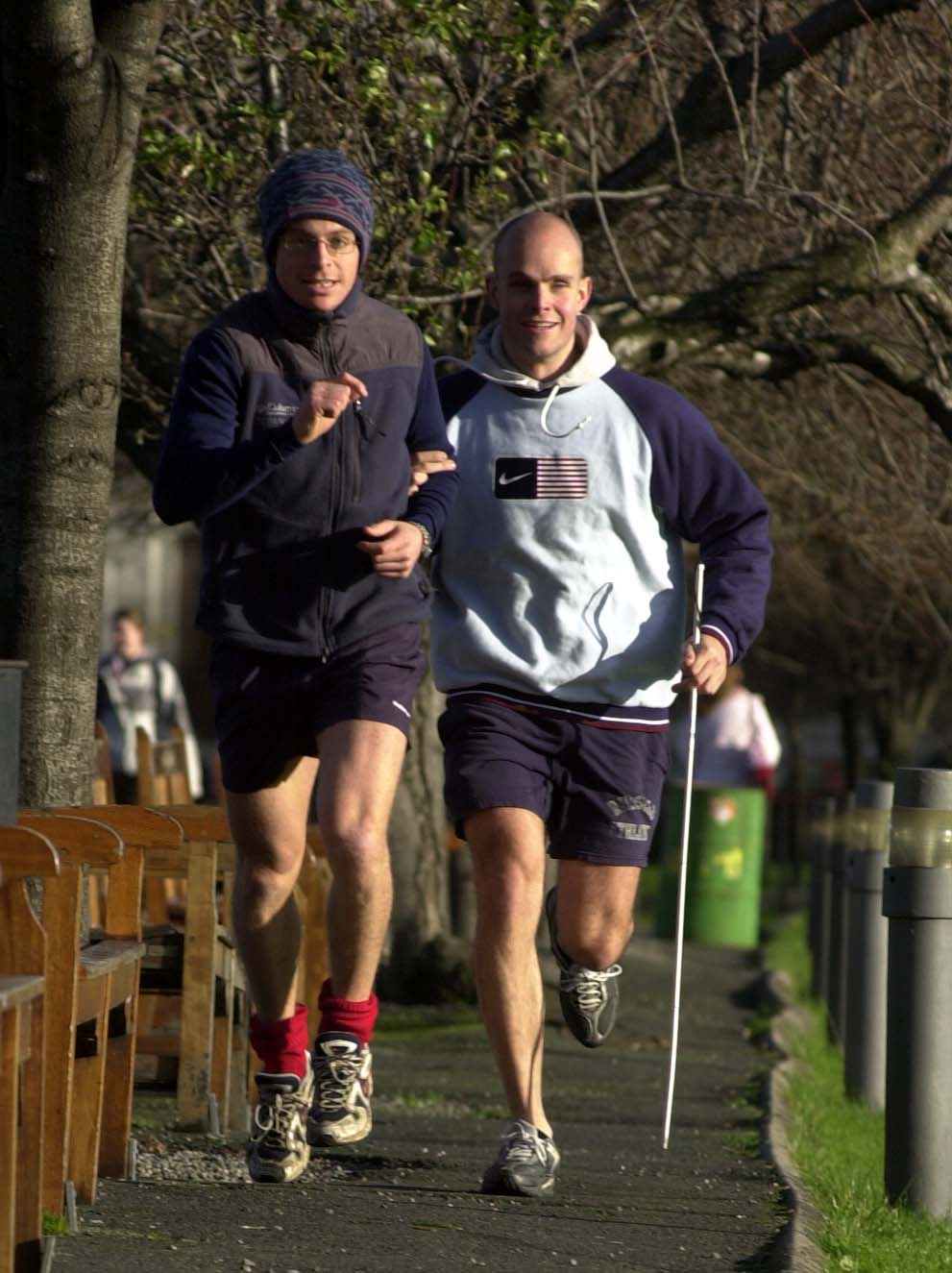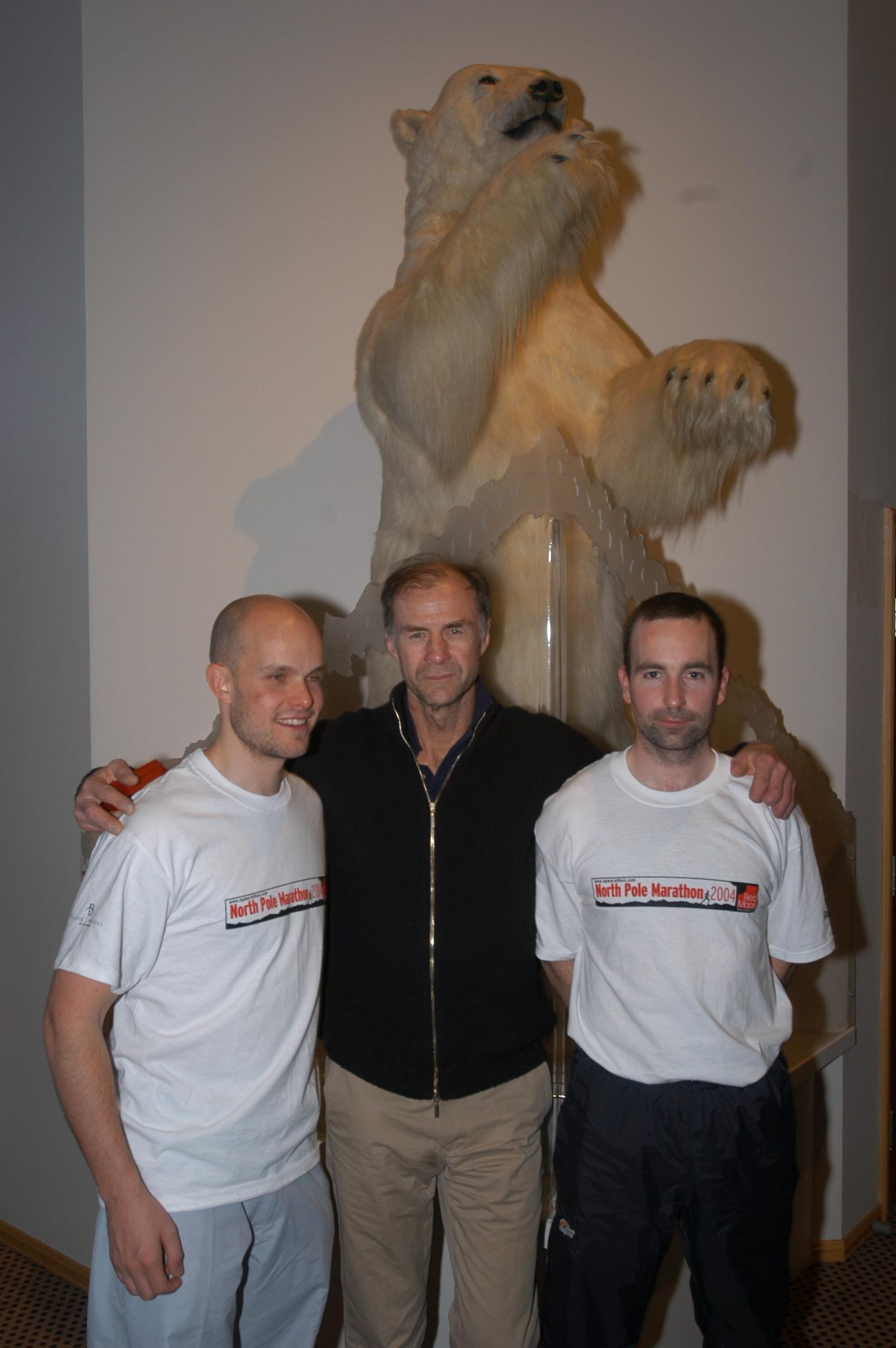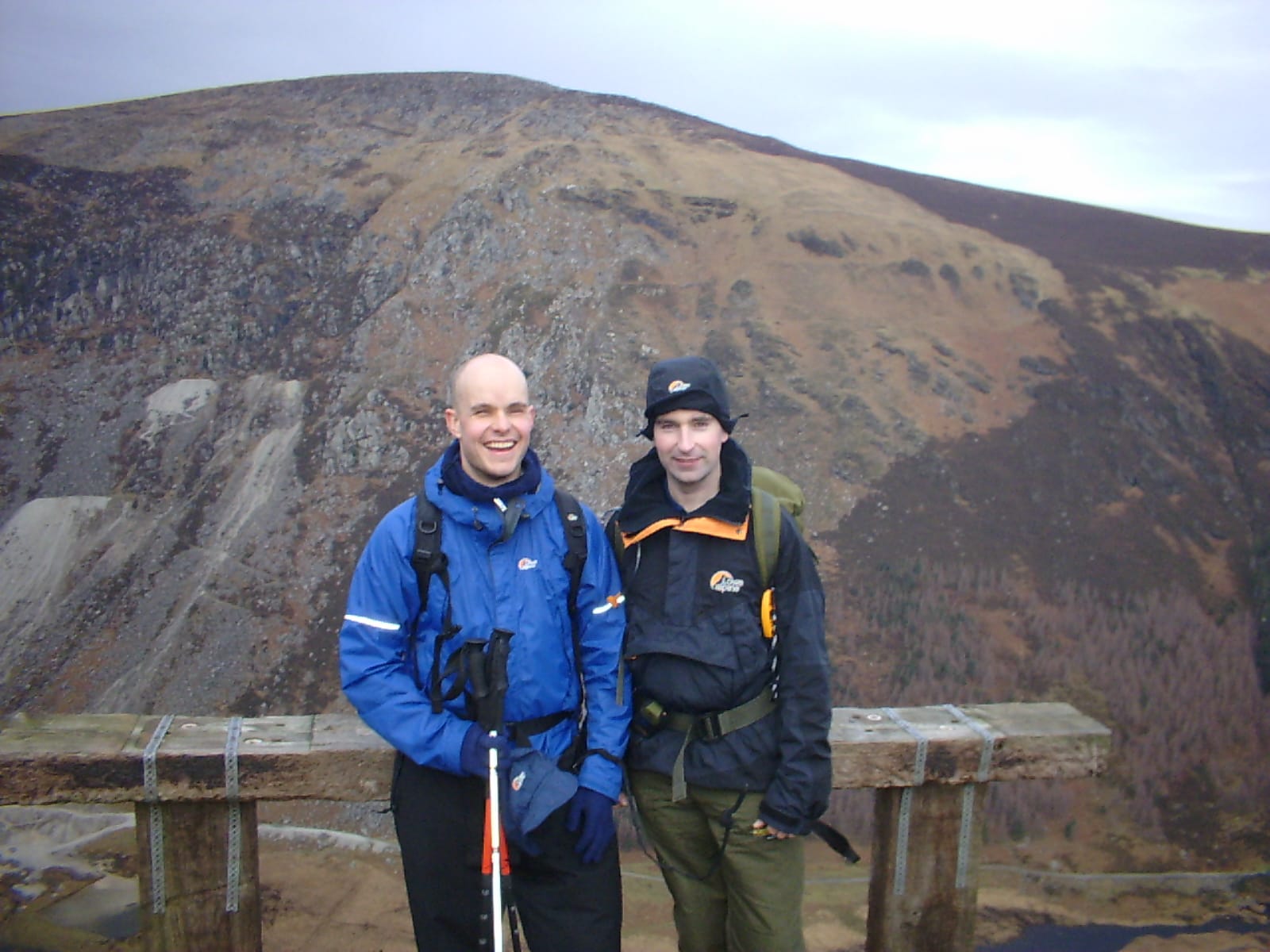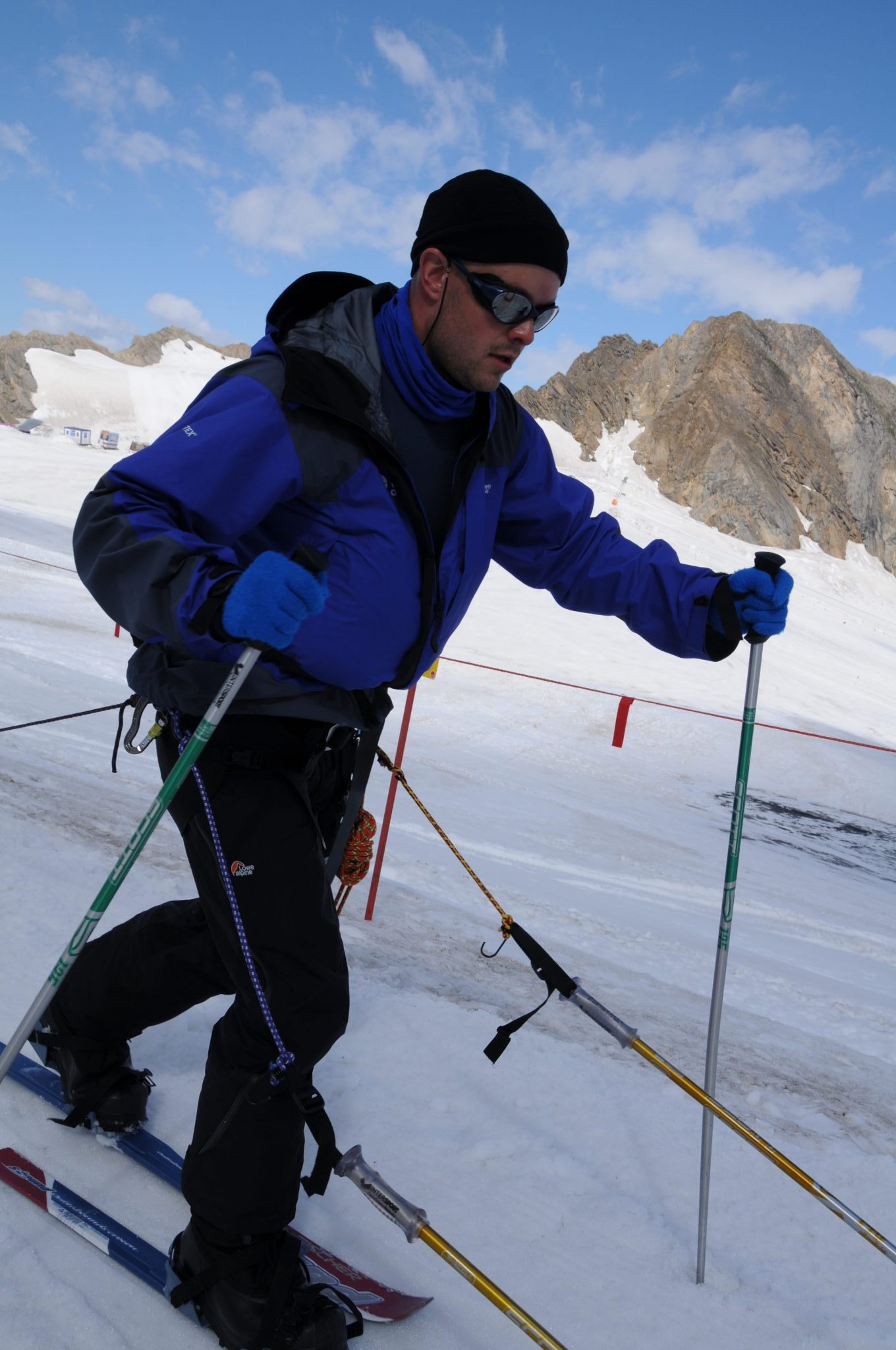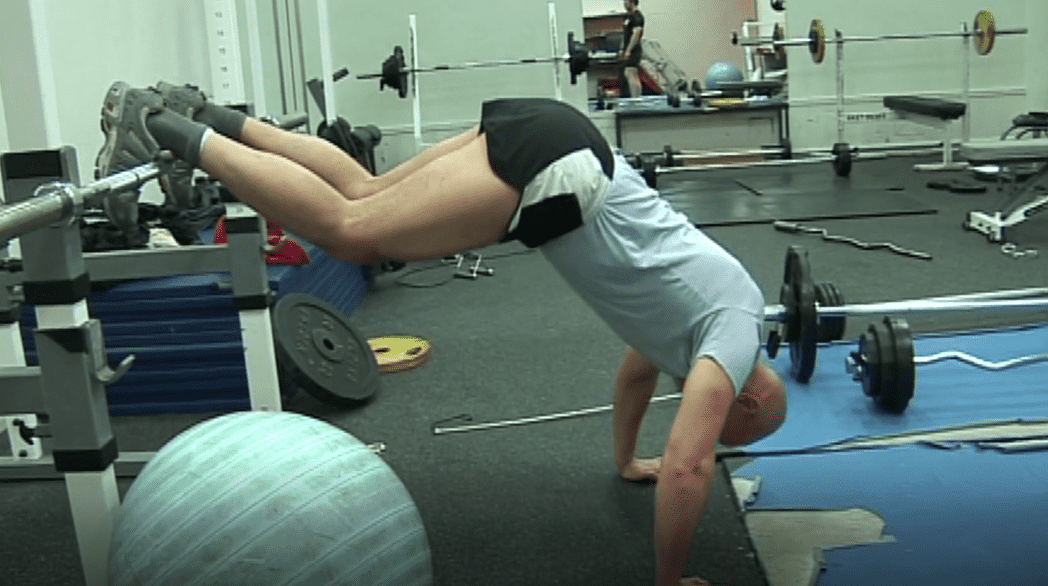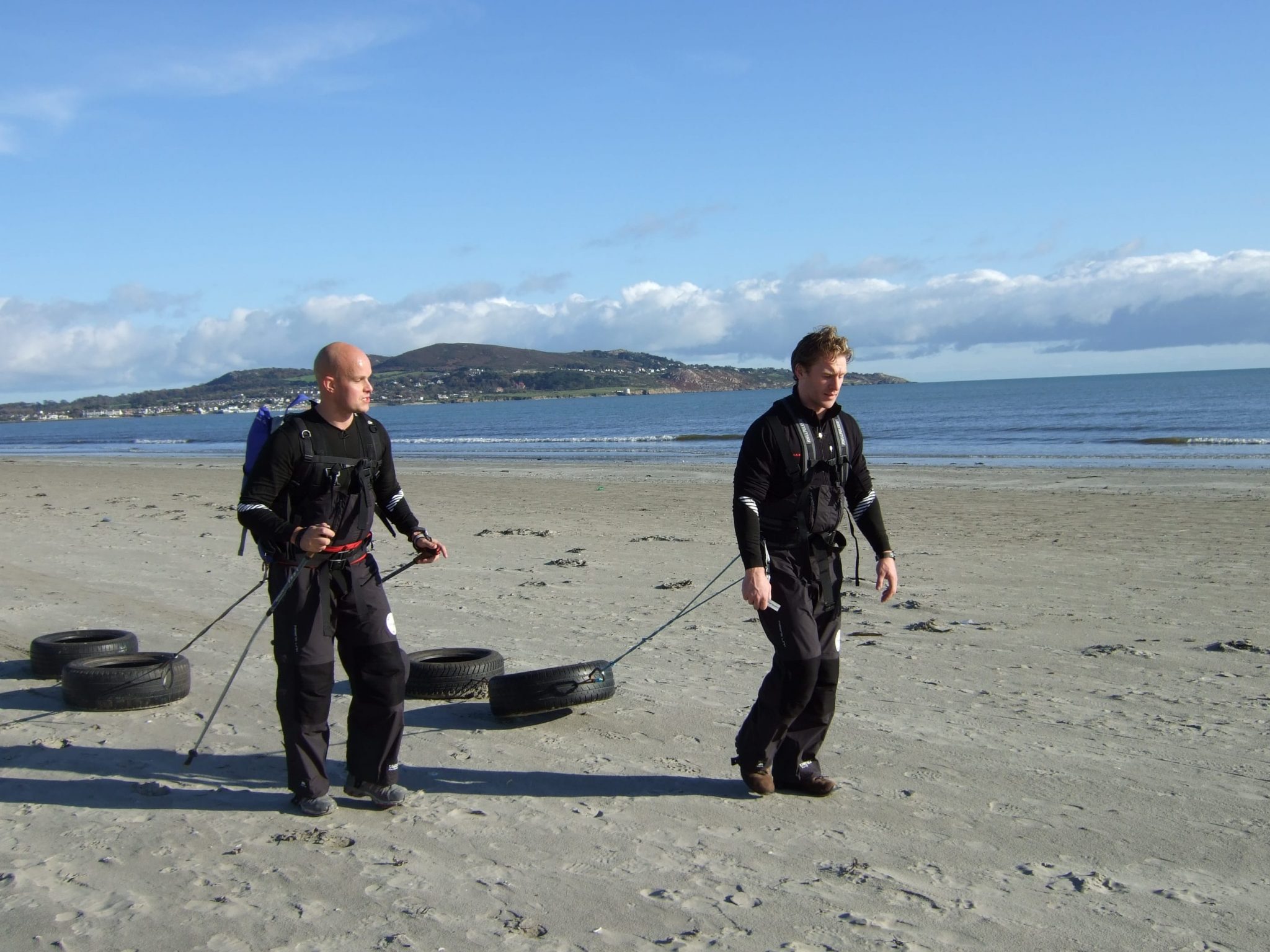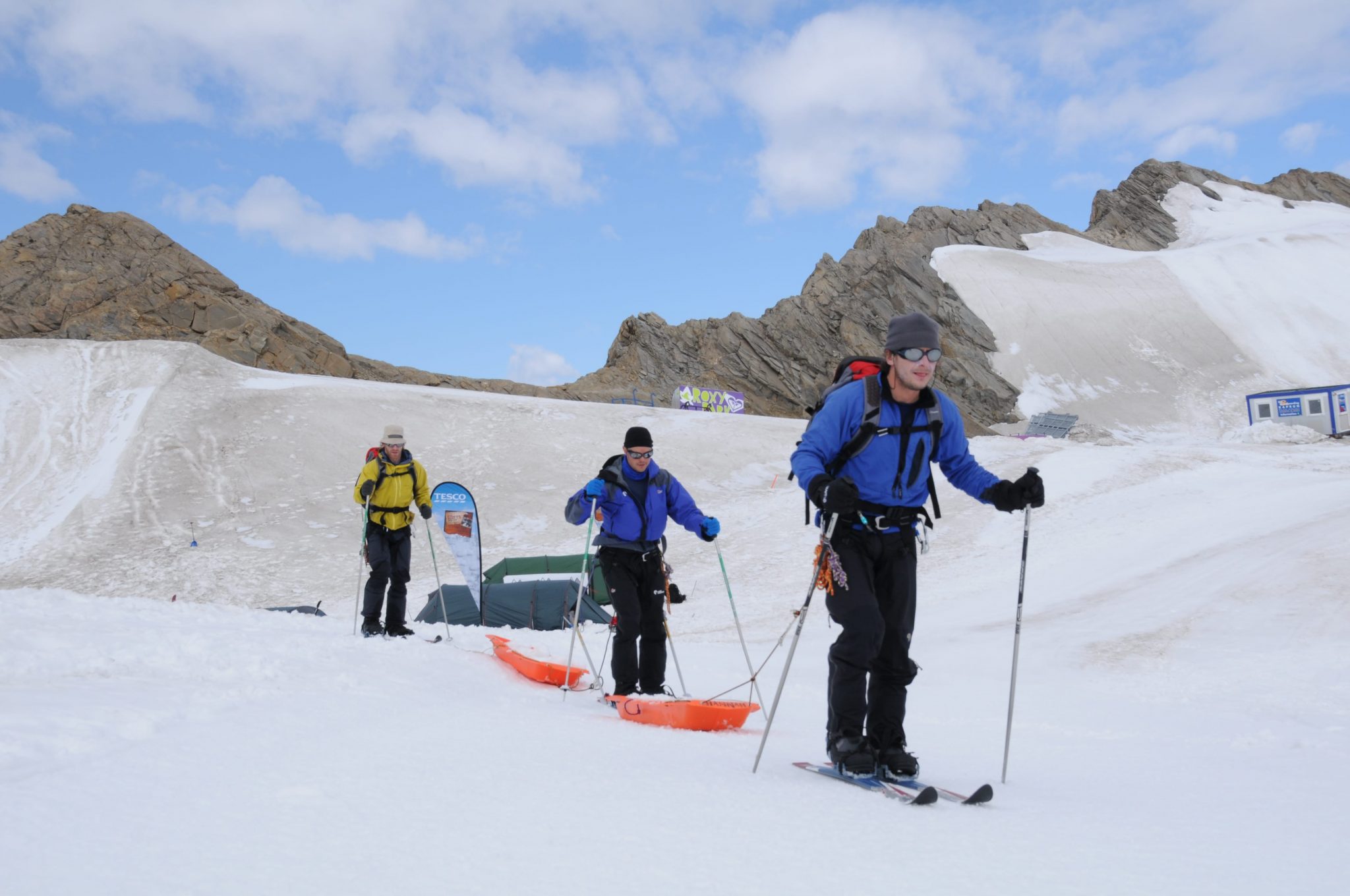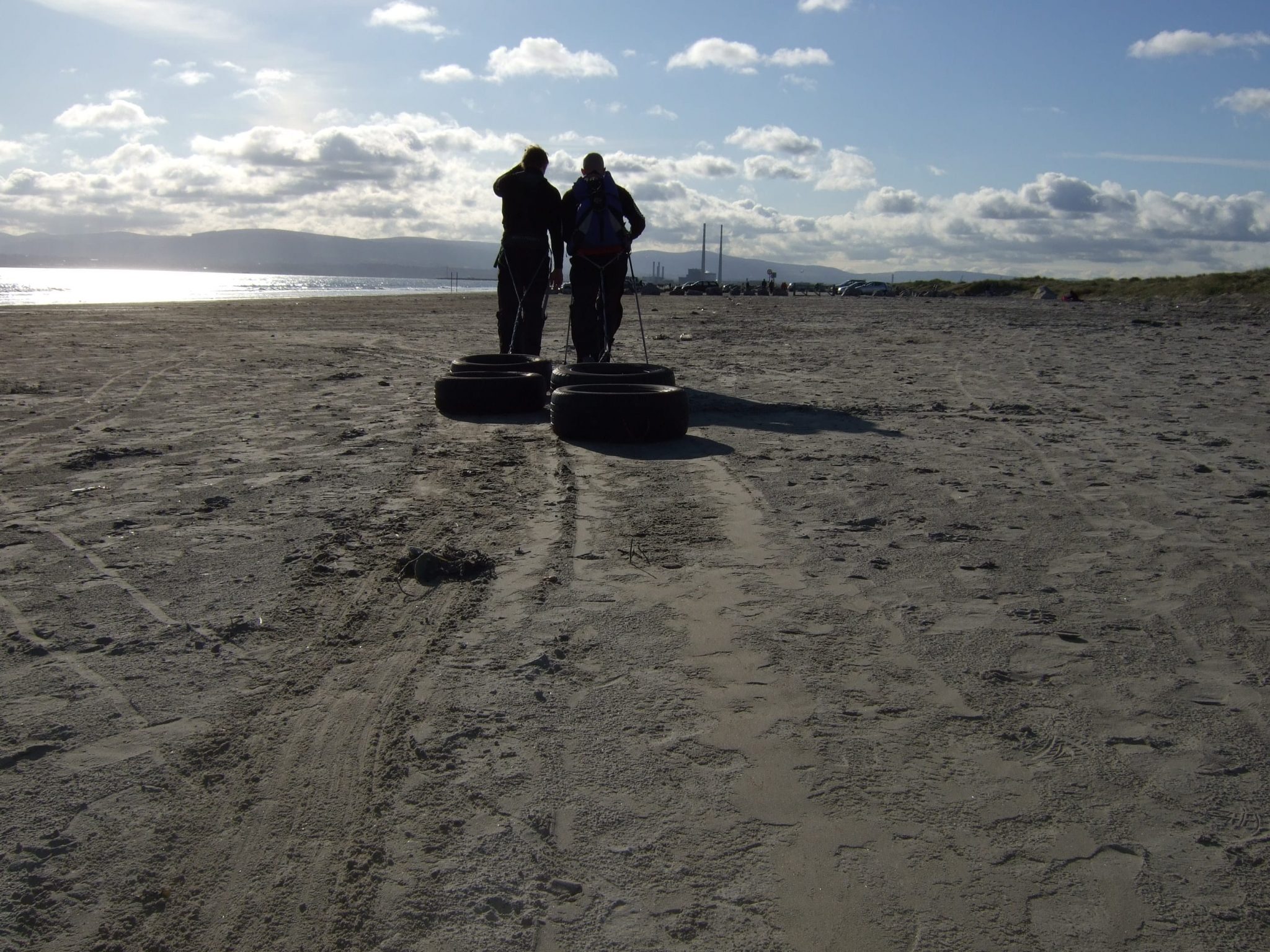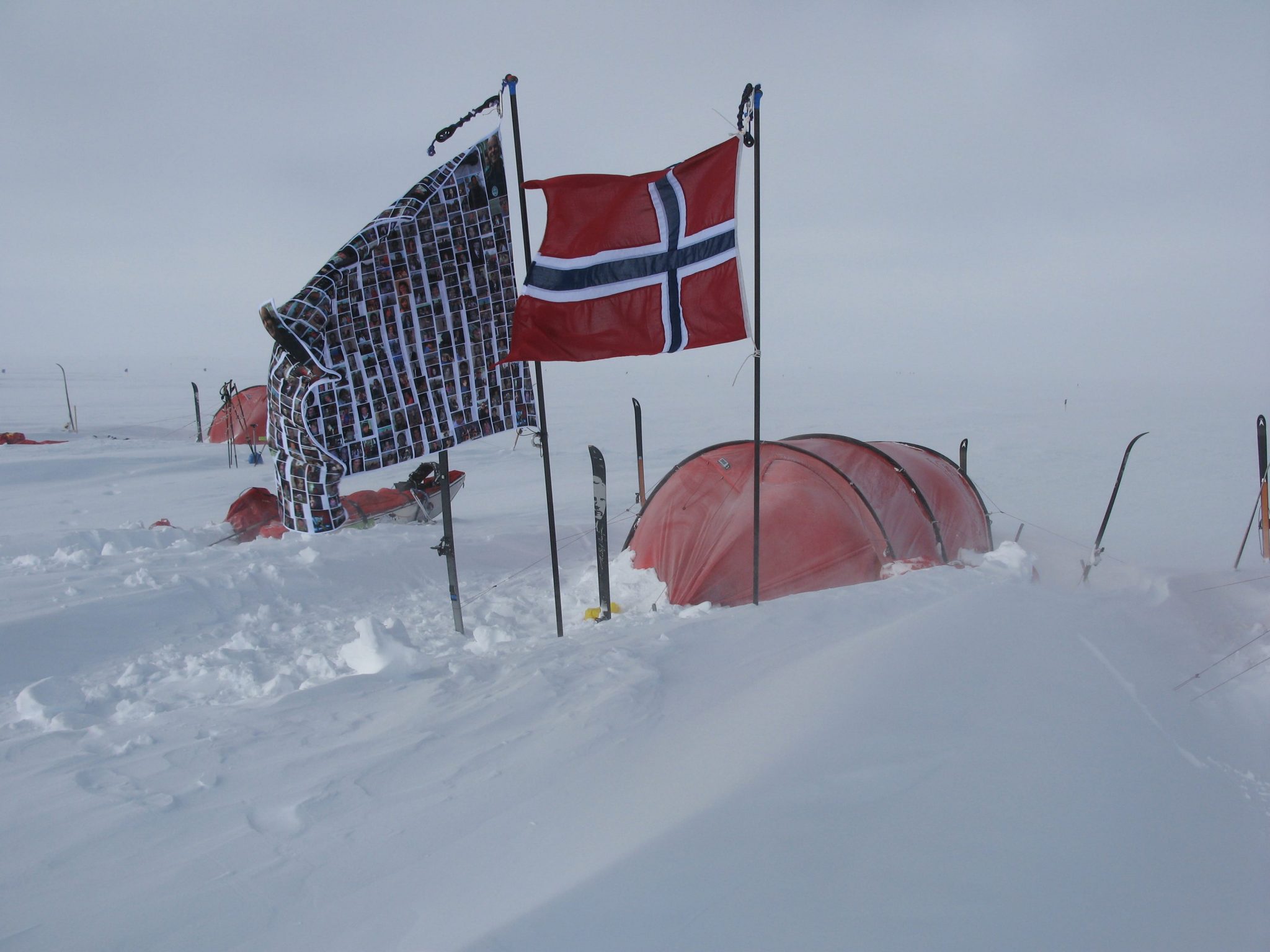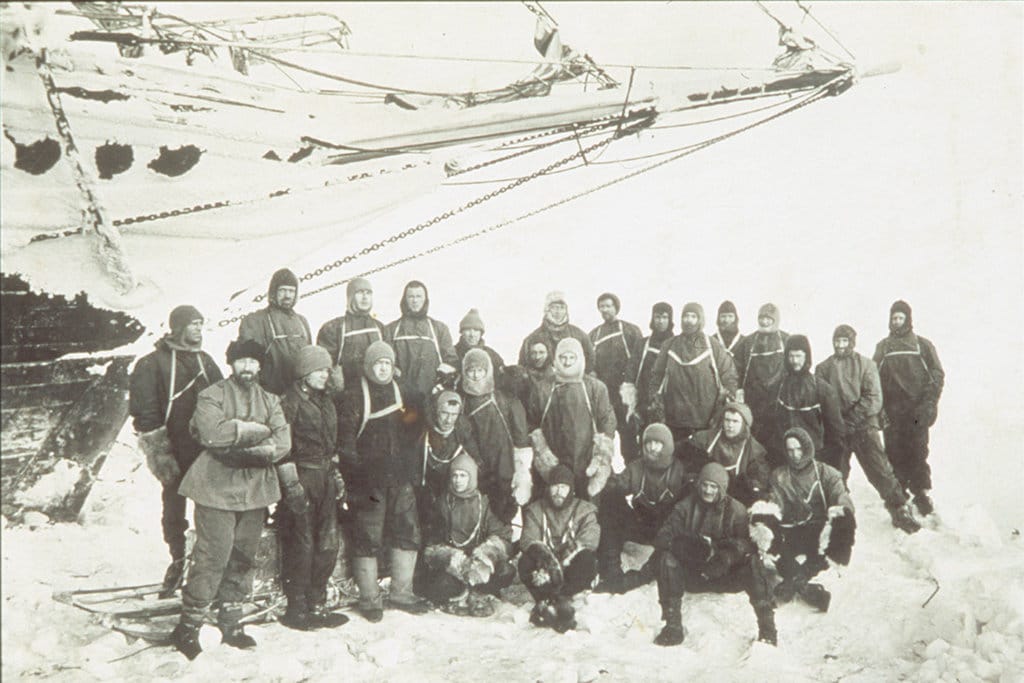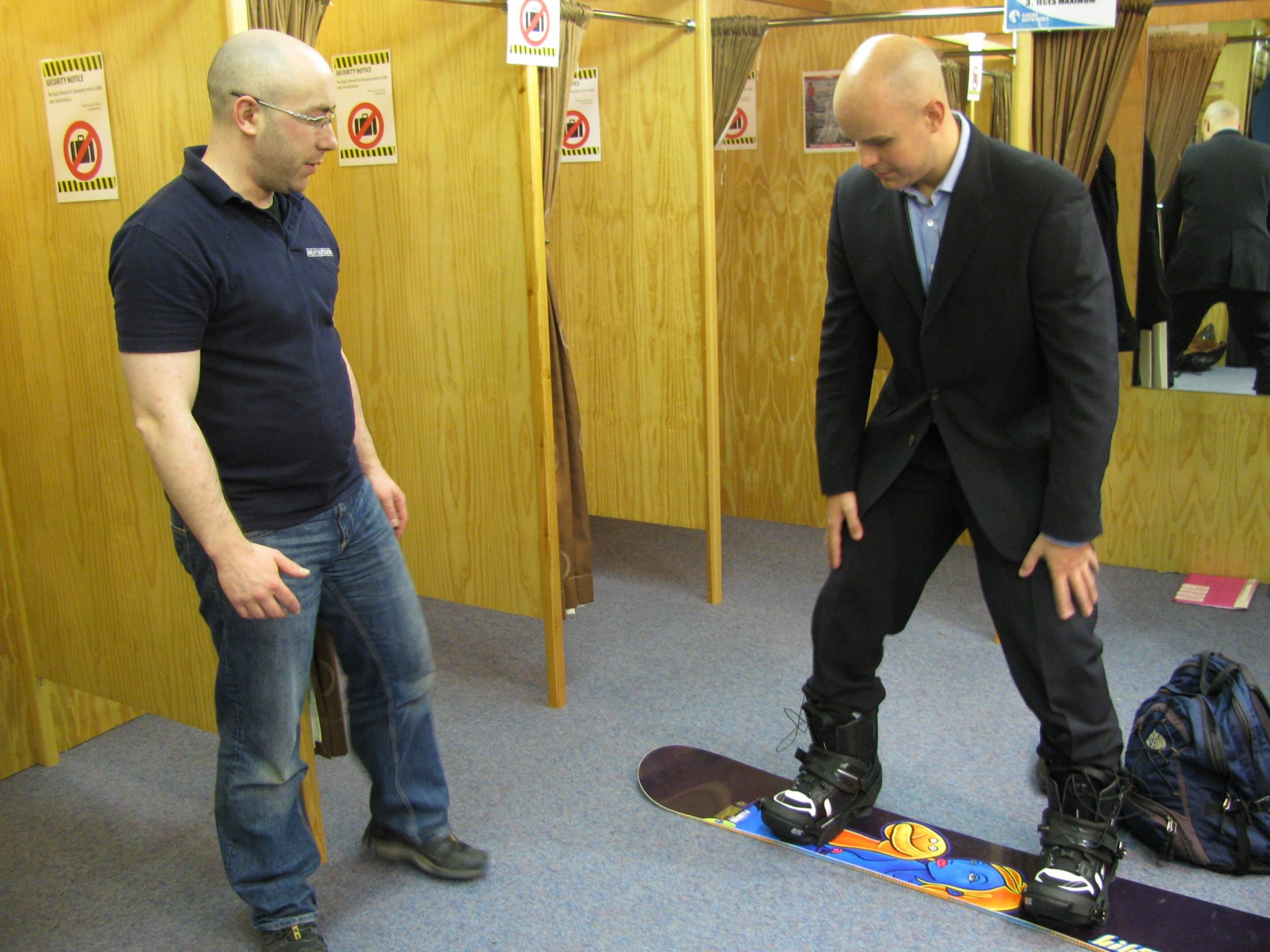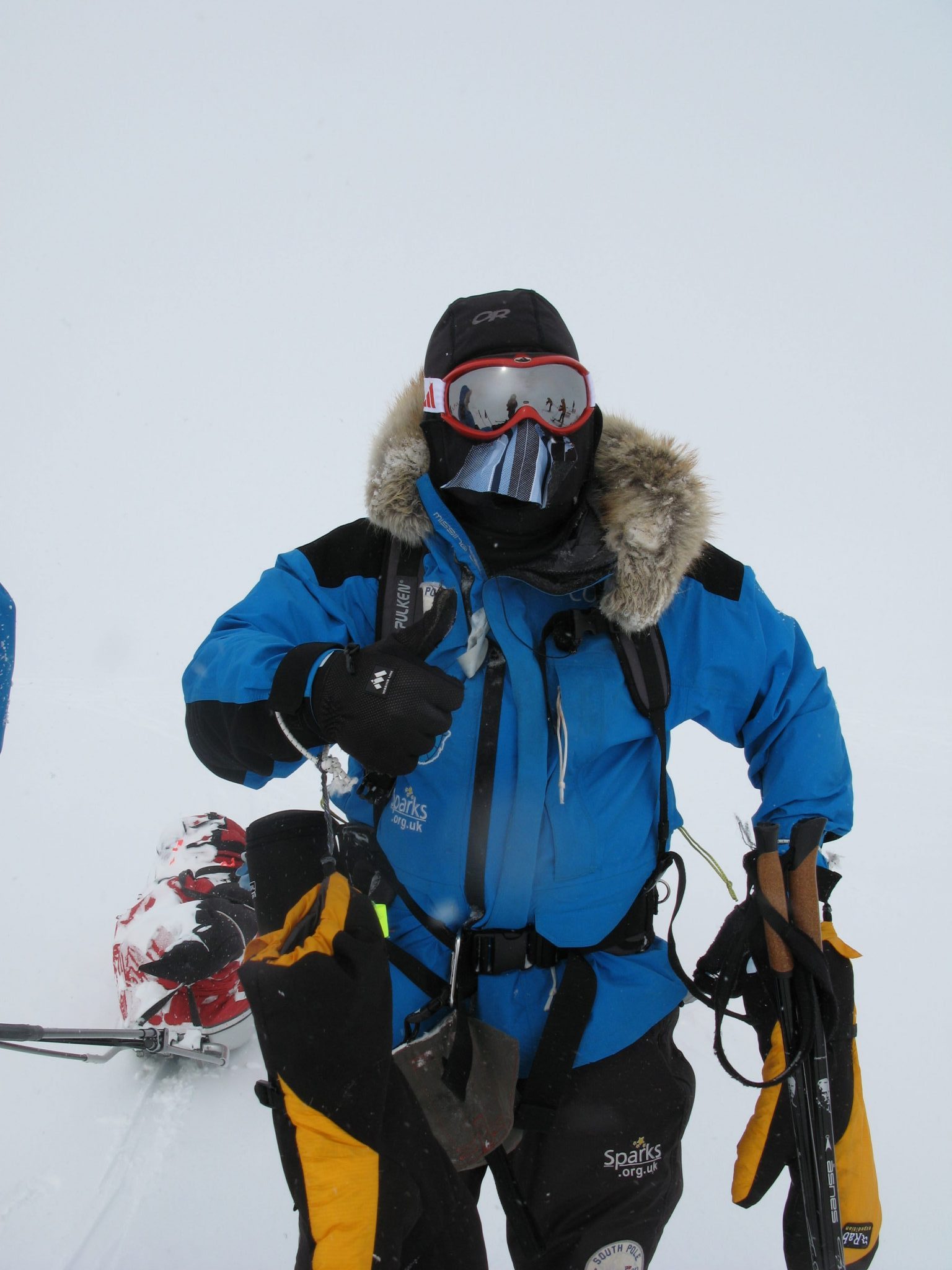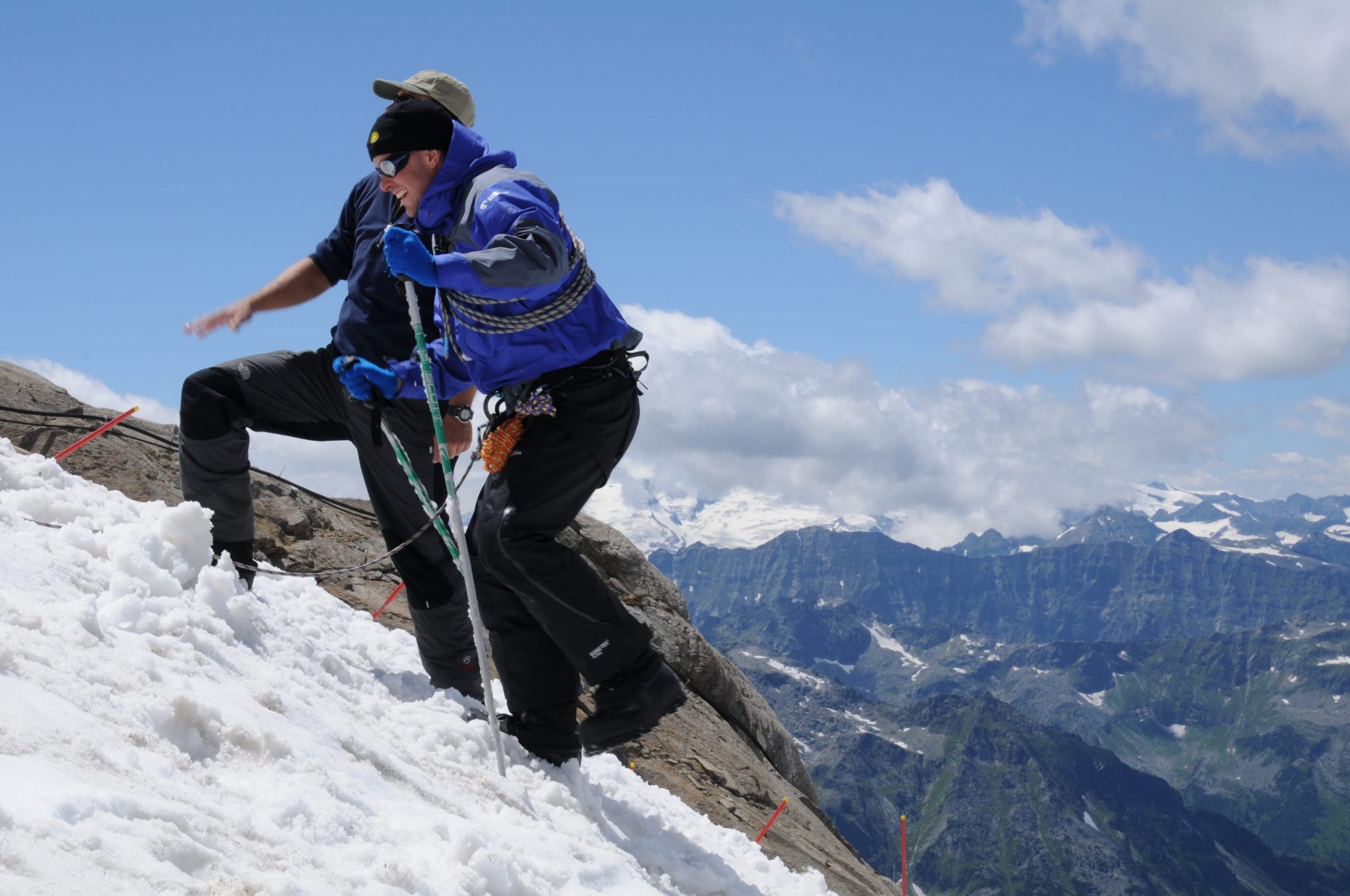Thursday, 31 July 2008
Noel dropped off the flat of the plateau and I heard the swoosh of his skis gathering pace. In a split second his pulk (sledge) followed and then it was me. The tips of my skis hung over the edge and soon I too was on the move. Within seconds I was travelling at speed and with that, my control disappeared…
The snow-plough that had provided so much control on my first downhill skiing attempt back in Chamonix was not working. That time I was wearing downhill boots and bindings which held my heels firmly in position allowing me to carve through the snow and slow myself down. This time I was on cross-country skis and the only connection with my skis was one strap holding my toes in position. As I tried to point my toes in and more importantly push my heels out to catch an edge and plough through the snow, the only thing that happened was my heels slid off the skis and over the slippery surface – my heels ploughed the snow but the skis kept pointing straight down!
With my speed increasing, my control gone and my confidence left somewhere back at the top of the hill I hit a mound of snow and in a flash I was down. My less than graceful skiing now turned into a full blown face plant. My own momentum was taking me forward and having been attached by solid poles to Noel’s pulk (sledge) I was now being dragged down the hill on my face. Matters were only made worse later that night as we watched the footage in our tent…just as I hit the snow with my face I appear centre shot of our camera in night-vision mode. This was the result of our first live test of the new guidance system – it didn’t work!
The challenge of developing an effective guidance system is one of the big blind specific issues for our team– not least because we will be protecting our heads and faces from the sub-zero temperatures and verbal communication will be difficult whilst moving, if not impossible. As a result I have been designing the South Pole guidance systems in my head since entering the race months ago and the design I had come up with sseemed to make sense – in my mind at least.
My prototype design – modelled only in my head – was a modified version of the system that had worked so successfully on the rough terrain and narrow cliff top pathways during the Everest Marathon in 2007. John O’Regan and I developed the Everest system based on the principle of my Guide Dog Larry’s harness – one trekking pole from my left wrist forward to John’s left wrist and one from my right wrist to his right wrist. This system not only allowed me to use my own trekking poles as normal to feel the ground immediately at my feet but I could feel John moving left, right, up and down with very little verbal instruction. I figured I could design a similar system for the South Pole…
However, the difference in Everest was that we weren’t wearing skis and we weren’t pulling pulks (sledges). In Antarctica we have a much bigger span between the lead man and me – the Everest system will not work. But the principle of solid poles was what I had envisaged as the key to our search for a non-verbal method of communication…
In line with my design, Simon and Noel rigged up the prototype for testing. Solid poles running from the back of the pulk –back left to my left hip, back right to my right hip. On the flat and uphill the system was working well. The information about the terrain and direction was travelling up the solid poles to my hips and registering through my climbing harness almost immediately. In fact it was perhaps a little too solid and I struggled to react to the variations in pace – either I was holding Noel back when he wanted to move faster or I was tipping into his pulk ahead as he slowed. On the flat and uphill these were minor issues and I knew that with some bungees on the end of each pole there would be enough slack built into the system to get around these problems. However, the downhill was different…
On the final day of our Austrian training we moved out from camp in formation. Noel in front with pulk in tow, me and my pulk and then Simon behind. At the summit we spent time working on crevasse rescue techniques but for those couple of hours I was really worried about how we would get back down. The narrow track fell away to the left and ended in a pile of rocks and judging by my lack of control on skis the previous few days I was really worried about damaging myself and pulling the other guys over with me. Over time I have learned to share these types of concerns with team-mates. There is no glory in getting injured or injuring others in the interests of bravado. Noel obviously picked up on my concerns and suggested that we mixed it up for the return journey to camp. Noel is a hugely experienced skier and he suggested switching with Simon so he could act as a break man at the back whilst Simon led. It was the last piece of skiing of the trip and the result was brilliant – no face plants!
We skied the entire way back to camp in complete control. Simon driving on in front, me behind and Noel acting like a dog sled musher at the back. It was amazing as we travelled over the snow, my confidence grew by the second as Noel held us back where appropriate and shouted at me to stop slowing the team down when I started to get nnervous. As we slid into camp I was on a high and Simon was too – it looks like we’ve cracked the system.
And so, I’m back to the prototyping…bungees, poles, karabiners, pulks, skis, boots, team order and off to the sand dunes at our local beach to test and re-test it. We must get this absolutely right before going South and we plan to get on the snow again before too long…
